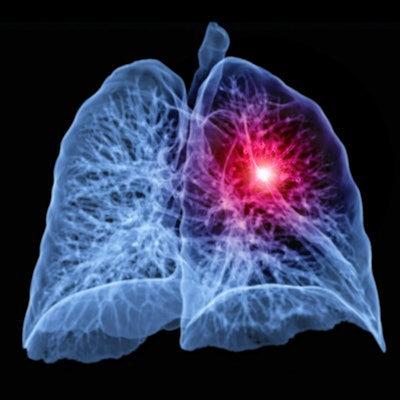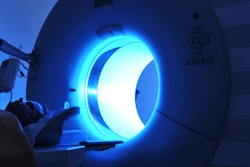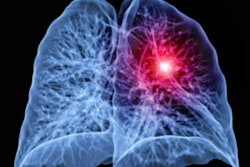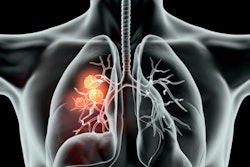
Radiomics and artificial intelligence (AI) can be used to guide treatment of non-small cell lung cancer (NSCLC) without the need for a biopsy, according to research presented January 13 at the American Association for Cancer Research (AACR) Virtual Special Conference on Artificial Intelligence, Diagnosis, and Imaging.
A multinational research team led by presenter Wei Mu, PhD, of H. Lee Moffitt Cancer Center and Research Institute in Tampa, FL, reported that AI analysis of PET/CT exams of NSCLC patients could noninvasively -- and with a high level of accuracy -- predict the status of two molecular biomarkers currently needed for treatment decision-making under existing guidelines.
"Using the generated deep-learning scores, we could obtain noninvasive treatment decision support that could be used as a clinical decision support tool, pending validation of clinical utility in a large prospective trial," said presenter Wei Mu of H. Lee Moffitt Cancer Center and Research Institute.
Under current guidelines from the U.S. National Comprehensive Cancer Network (NCCN), molecular biomarkers -- activating mutations in epidermal growth factor receptor (EGFR) and expression of programmed cell death ligand 1 (PD-L1) -- are used to guide treatment decisions for patients with advanced NSCLC.
However, this approach requires a patient biopsy, which may fail due to insufficient quality of the tissue, according to Mu. Among other shortcomings, there is also a chance for morbidity from biopsy in NSCLC patients.
"Therefore, we think it is necessary to develop a noninvasive and real-time guideline," Mu said.
The researchers hypothesized that EGFR mutation and PD-L1 expression status could be captured by FDG-PET/CT images and analyzed using AI algorithms. First, they retrospectively collected PET/CT images from 837 NSCLC patients at H. Lee Moffitt Cancer Center and three hospitals in China -- Shanghai Pulmonary Hospital, the Fourth Hospital of Hebei Medical University, and the Fourth Hospital of Harbin Medical University.
Data from two of the Chinese hospitals were used to train and validate two residual convolutional neural networks to predict EGFR mutation and PD-L1 status. The researchers then compared the performance of the algorithms by measuring the area under the curve (AUC) and comparing it with other methods such as SUVmax and a clinical score on an external test cohort, which consisted of 65 patients with EGFR mutation status from a third Chinese hospital and 85 patients with PD-L1 expression status from H. Lee Moffitt Cancer Center. Furthermore, they also assessed the association of the deep-learning scores produced by the algorithms with progression-free survival.
| Value of AI for predicting PD-L1 expression and EGFR mutation status on PET/CT images in NSCLC patients | |||
| SUVmax (AUC) | Clinical score (sex, smoking, histology, SUVmax) (AUC) | AI algorithm (AUC) | |
| Predicting PD-L1 expression status | 0.69 | n/a | 0.82 |
| Predicting EGFR mutation status | 0.50 | 0.70 | 0.81 |
The researchers also found that the deep-learning score was indistinguishable from both immunohistochemistry-derived PD-L1 status and polymerase chain reaction-based EGFR mutation status in predicting progression-free survival.
"Using the generated deep-learning score [from the algorithms], the tumor biomarkers in the guidelines could be replaced," Mu noted.
In the future, the researchers will perform a prospective observational trial to compare the results of treatment decisions based on the deep learning-based approach with those made using the molecular biomarker-based NCCN guidelines, she said.
In addition, they would like to incorporate a predictor for anaplastic lymphoma kinase gene rearrangements, as well as predictors for serious adverse events and cachexia, she said.




















